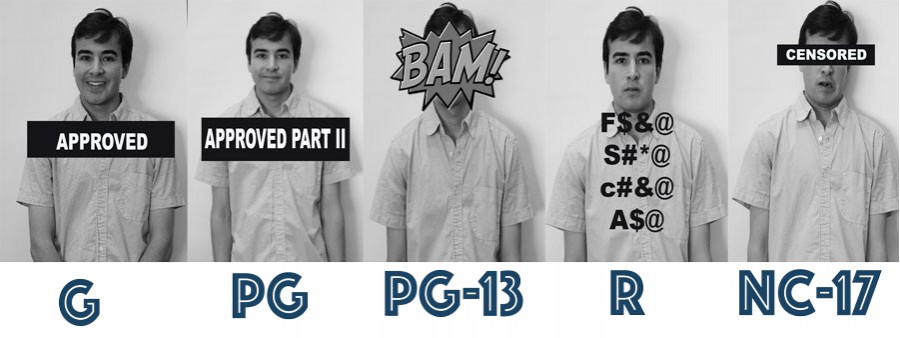The MPAA: Who Decides What?
November 19, 2015
Quentin Tarantino once said, “Violence is one of the most fun things to watch,” and in today’s society it seems that that is becoming more and more true. It seems the more violent our society gets the less we care about how many people are killed on screen. These days it seems sex is becoming more inappropriate than murder, but why is that? Who decides what a film is rated and what factors determine that rating.
The Classification and Rating Administration of the Motion Picture Association of America is the group responsible for creating guidelines for film content. This film rating system, known as CARA, was meant to provide parents with information in advance about the content of movies to help them determine which movies were appropriate for their children.
There are five ratings in CARA today: G, PG, PG-13, R, and NC-17. (Originally there were four: G, PG, R, and X.) G-rated films are meant for general audiences with violence at a minimum and nudity and sexual content not present. The PG (“Parental Guidance”) rating suggests the material may involve violence or brief nudity, but no drug content and any element of violence or nudity should not be unsettling to a child ten or older. A PG-13 rating might involve violence, nudity and drug content. R-rated films are restricted for mature audiences and content is much more mature or extreme; language plays a huge part in determining whether a film falls under this category. The NC-17 rated films contain content that is believed too adult for anyone 17 and under.
In recent times there has been controversy with the PG-13 rating. According to the online film magazine The Dissolve, a study has shown that “the gun violence levels in top-grossing PG-13 films exceed those of equally successful R-rated films.”
The PG-13 rating was meant to fix the controversy arising from parents’ complaints of violence, but it seems it has created more problems. The PG-13 rating first came into action in 1984 in response of complaints about Indiana Jones and the Temple of Doom, in particular the scene where a character pulls a man’s still-beating heart out of his chest. The movie Gremlins also angered parents for its violence.
In recent years, films rated PG-13 such as The Dark Knight drew complaints because of their realistic style of violence. For example, there is a bomb inside a person’s stomach, which is visible to the audience. The film was given a PG-13 rating for “intense sequences of violence and some menace” while a film that came out a few years later, Silver Linings Playbook, was rated R for language and some sexual content/nudity although the sexual content is usually only in dialogue and is not visible to the audience.
In an interview with US News, Dan Romer, the director of Annenberg’s Adolescent Communication Institute, says, “The only difference between PG-13 and R are sex and profanity.” Thus it seems the MPAA is more concerned with the effects of sexual content and language on a child than violence. But on the other hand, it may have to do with ticket sales.
Ever since the PG-13 rating began in 1984, PG-13 movies have been more likely to become box office hits. For example, Batman (1989) was the first to hit the top 15 mark in the box office. And after that, PG-13 rated films have often proven to be box office smashes. One such film that came out this summer, Jurassic World, has made it to the number-three spot for all-time box office sales. Eight out of the top ten grossing films in the United States are all rated PG-13, including the number one spot of Avatar.
All of the movies in the top ten were high-budget films. The cost of Jurassic World, according to IMDB, was $150,000,000, and it grossed $204,600,000 in ticket sales on its opening weekend. Another top grossing movie of 2015, also rated PG-13, is Avengers: Age of Ultron, which grossed over $300,000,000 in ticket sales, according to Box Office Mojo.
So, money may have a say in why films are rated the way they are — R-rated films haven’t been nearly as successful as PG-13 rated films. But the PG-13 rating, which instructs, “Parents Strongly Cautioned,” still allows children to see a violent movie without adult supervision.
Language and sexual content contribute to movies receiving an R rating, but money seems to play a part also. Movies with a higher budget tend to get a PG-13 rating in order to get a wider audience, which will bring in more money. How the MPAA decides what is rated PG-13 and what is rated R seems like an absolute mystery from an association that is meant to provide advance information to help parents decide what is appropriate for their children.
